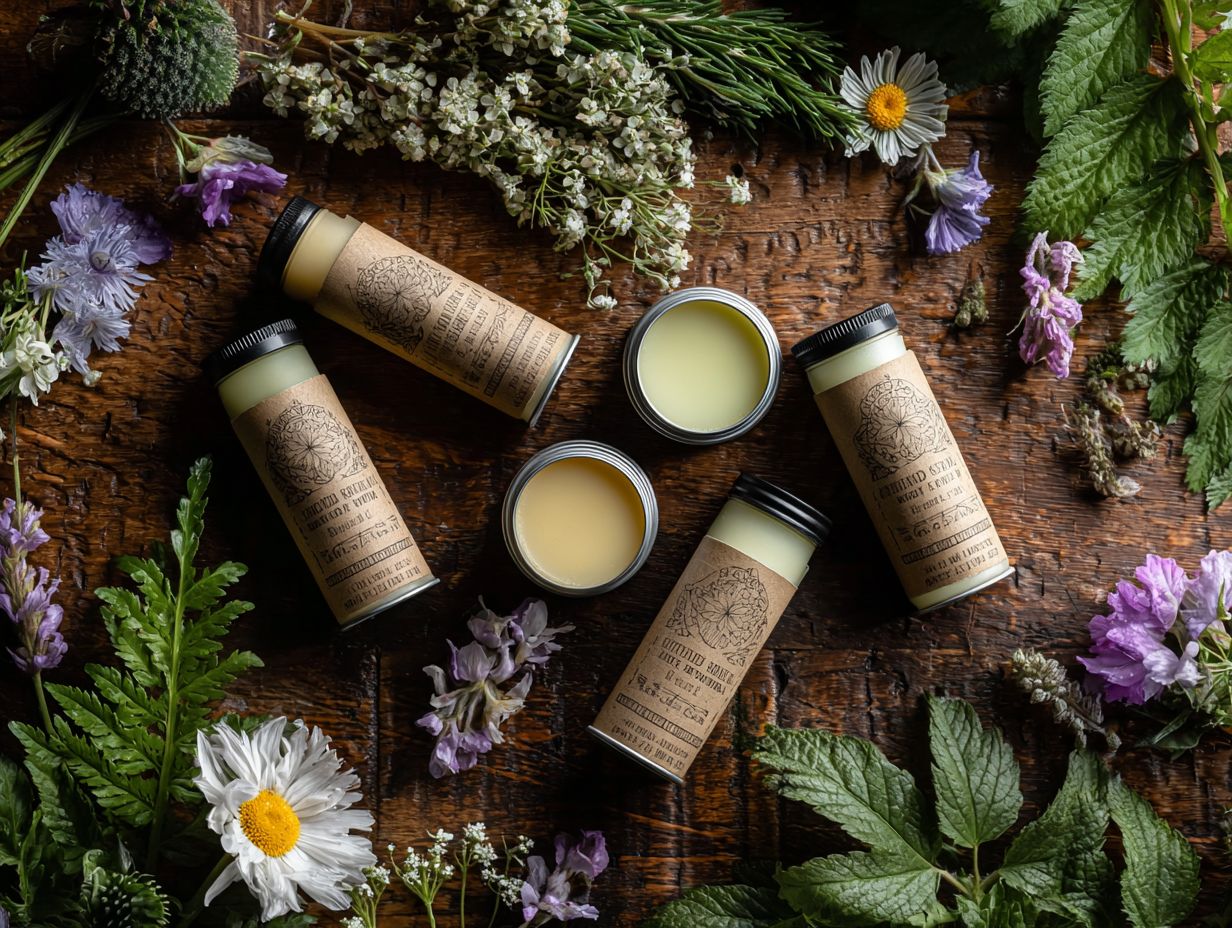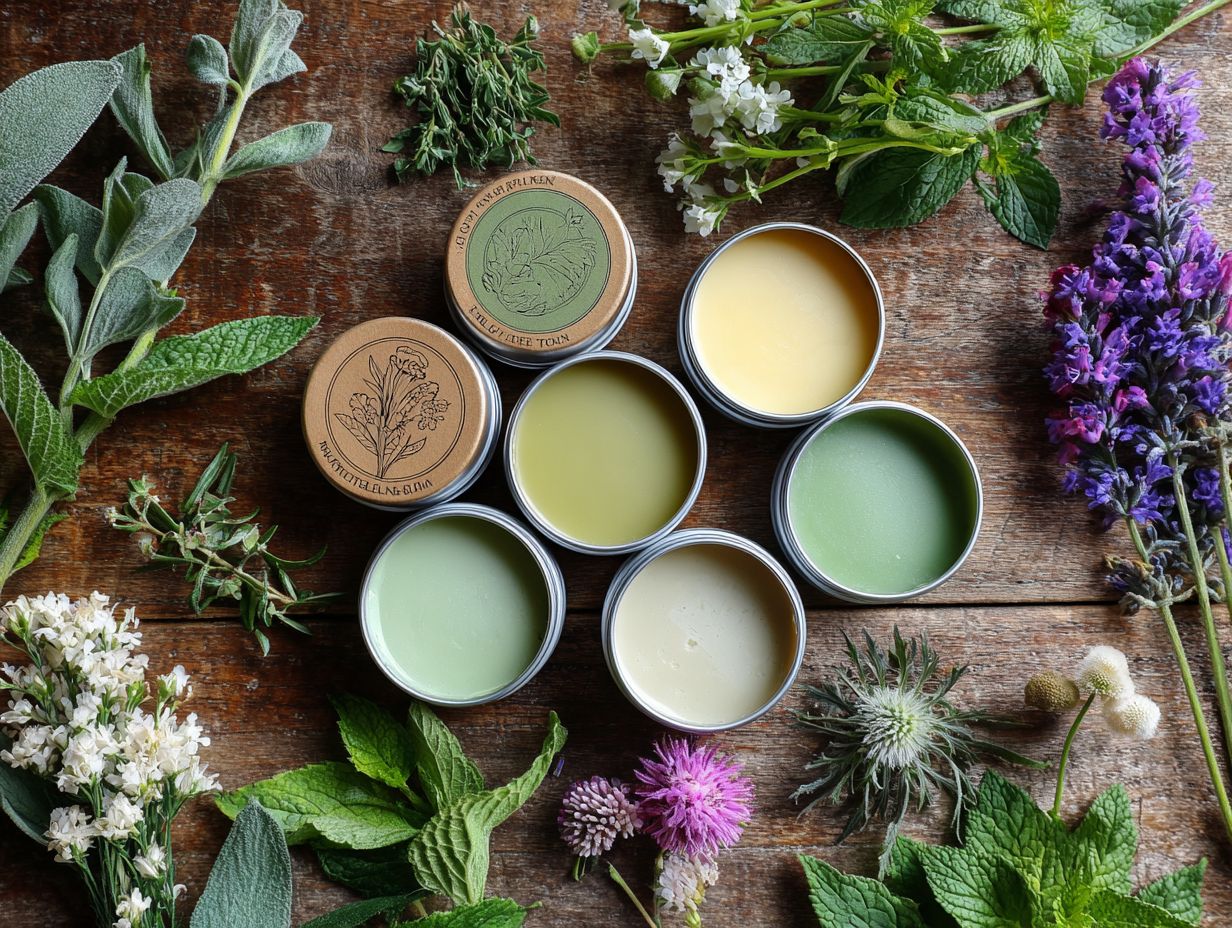Choosing the right deodorant can feel overwhelming, especially with the rising popularity of natural alternatives and innovative formulations. As someone who values both efficacy and fragrance, I’ve embarked on a journey to discover natural deodorants that truly deliver. In this guide, I’ll explore what defines natural deodorants, highlight key ingredients that make them effective, and share my favorite brands. Together, we’ll navigate how to select the right product for your needs, ensuring you smell fantastic all day and experience the benefits of a natural lifestyle.
What Are Natural Deodorants?

Natural deodorants are personal care products that I choose to use because they are formulated without synthetic chemicals. These products typically incorporate ingredients such as baking soda, essential oils, and herbal extracts to effectively combat body odor. I appreciate the emphasis on ingredient transparency, which allows me to understand exactly what I am applying to my skin.
For instance, I often opt for Schmidt’s Deodorant, which combines shea butter and coconut oil for moisture with baking soda for effective odor control. Alternatively, I consider Native Deodorant, which features arrowroot powder and baking soda to ensure effective odor absorption, all while being free from aluminum and parabens.
By selecting natural alternatives, I can avoid harmful chemicals like parabens and phthalates, thereby minimizing potential skin irritations and health risks.
Benefits of Choosing Natural Products and Embracing a Health-Conscious Approach
Switching to natural deodorants has significantly enhanced my overall wellness and personal hygiene, offering benefits such as reduced skin sensitivity and decreased exposure to harmful chemicals.
I appreciate that natural deodorants typically utilize plant-based ingredients that nourish the skin, ultimately improving its health. For example, I have found brands like Schmidt’s to be effective; they use baking soda and arrowroot powder, which not only absorb moisture but also combat odor effectively.
Many users, including myself, have reported experiencing fewer rashes and less irritation after making the switch, highlighting the positive impact on skin sensitivity.
Additionally, opting for environmentally friendly products aligns with my commitment to sustainability and holistic health, as many brands prioritize recyclable packaging and cruelty-free practices-an approach that resonates with the growing consumer demand for eco-conscious choices.
Key Ingredients to Look For
I recognize that understanding the ingredients in natural deodorants enables me to make informed choices that align with my health, body chemistry, and lifestyle preferences.
Essential Oils for Fragrance
Essential oils such as lavender, tea tree, and citrus not only provide pleasant fragrances and aromatherapy benefits but also offer additional advantages, including antibacterial properties.
I appreciate lavender oil for its renowned calming effects, which is why I often choose brands like Lavanila that emphasize natural ingredients in their formulations.
Tea tree oil is another favorite of mine, as its potent antibacterial properties are effectively utilized in products from Native Deodorant, allowing for effective odor control without the use of harsh chemicals.
Additionally, I find citrus oils, particularly lemon and orange, to be both refreshing and uplifting; these are commonly found in Schmidt’s Natural Deodorant.
When selecting a deodorant, I prioritize those containing these essential oils, as they provide both appealing scents and enhanced odor protection.
Natural Antiperspirants
Natural antiperspirants typically utilize ingredients such as aluminum-free starches and baking soda to effectively reduce moisture and neutralize odors without relying on synthetic compounds. These formulations often emphasize plant-based ingredients, including arrowroot powder or tapioca starch, which serve to absorb sweat.
For instance, brands like Native and Schmidt’s present effective alternatives that users highly regard for their gentle formulas and appealing scents.
In reviews, I have observed that many consumers experience a transition period when switching from traditional antiperspirants, with some reporting minor irritation at first. However, the consensus is that, over time, these natural options offer satisfactory odor protection and feel less harsh on the skin, making them a reasonable choice for those seeking to avoid chemical ingredients.
Popular Natural Deodorant Brands
I have observed that several brands are currently leading the market in natural deodorants, each providing unique formulations designed to meet a variety of consumer preferences and needs.
Brand A: Features and Benefits

Brand A differentiates itself through a strong commitment to organic ingredients, providing a diverse array of scents that cater to both men and women. Their signature offerings include Lavender Calm, Citrus Fresh, and Cedarwood Robust, each meticulously crafted to evoke distinct moods.
I often receive positive feedback on Lavender Calm for its soothing qualities, making it an excellent choice for relaxation. The 8 oz bottles are priced around $25, while the more convenient 2 oz travel sizes are available for $10.
Additionally, Brand A actively engages with users on social media, fostering a culture of feedback that significantly contributes to product development. This emphasis on customer experience is instrumental in maintaining high satisfaction levels and fostering loyalty among users.
Brand B: Features and Benefits
I take pride in Brand B’s reputation for eco-friendly packaging and commitment to cruelty-free practices, which resonate strongly with environmentally conscious consumers. Our products are crafted from sustainably sourced ingredients, prioritizing both quality and safety.
For example, I ensure that Brand B utilizes organic botanical extracts, which minimizes chemical use and guarantees a gentle experience for our users.
With customer satisfaction ratings averaging 4.8 out of 5, it’s evident that our formulations are both effective and comfortable. Brand B has also garnered several awards, including the Green Seal for our sustainable practices, setting a high standard within the industry.
This comprehensive approach not only attracts eco-conscious shoppers but also fosters loyalty among individuals who are passionate about sustainability.
How to Choose the Right Deodorant
I find that selecting the right natural deodorant requires careful consideration of my skin type, scent preferences, and the demands of my active lifestyle.
Skin Sensitivity Considerations
For individuals with sensitive skin, it is essential to identify potential irritants in deodorants, such as baking soda or certain essential oils, in order to select an appropriate product.
To address this concern, I recommend considering hypoallergenic brands like Native, which provides a baking soda-free formula, or Schmidt’s Natural Deodorant, which offers options specifically designed for sensitive skin.
It is also important to conduct a patch test on a small area of skin prior to full application. By applying a small amount and waiting 24 hours to observe any reactions, one can significantly reduce the risk of irritation and find the most suitable deodorant for their unique skin requirements.
Fragrance Preferences
Fragrance preferences are highly personal, as some individuals gravitate towards floral or citrus notes, while others may prefer earthy or herbal scents. When selecting the perfect fragrance, it is essential to consider both personal taste and the season.
During spring and summer, I find that light and refreshing fragrances with citrus or floral notes are particularly appealing. Some popular options include:
- Marc Jacobs Daisy
- Jo Malone Orange Blossom
Conversely, in fall and winter, I lean towards deeper and warmer scents like vanilla or amber, which evoke a sense of coziness. Notable examples include:
- YSL Black Opium
- Tom Ford Tobacco Vanille
Additionally, I encourage exploring fragrance layering-a technique that involves mixing different scents to create a unique signature fragrance. Testing various combinations in stores can help identify blends that resonate with your mood and style.
Application Tips for Best Results
I have found that the proper application of natural deodorants can significantly enhance their effectiveness, scent longevity, and overall performance throughout the day.
When to Apply

I find that applying natural deodorants at the right time-specifically after showering when my skin is clean and dry-significantly boosts their effectiveness. I also take into account my body temperature and sweat levels throughout the day.
For example, after a workout or during the hottest parts of the day, I notice that my scent can intensify due to increased sweating, highlighting the importance of effective odor management.
To address this, I make it a point to apply deodorant during the cooler parts of the day, and I always keep a travel-sized deodorant on hand for quick touch-ups. Additionally, I choose a pH-balanced formula to enhance scent longevity, which helps me maintain a fresh feeling throughout the day.
I also ensure that my underarm area is thoroughly dried before application to maximize absorption.
How Much to Use
Using the appropriate amount of natural deodorant is crucial; typically, a pea-sized amount is sufficient for effective odor control. Applying too much can result in residue buildup, which not only feels uncomfortable but may also irritate the skin. On the other hand, using too little may compromise its effectiveness, leaving me unprotected for extended periods.
As a general guideline, I ensure that I rub the deodorant gently into clean, dry skin, achieving even coverage without excess, utilizing its skin-friendly and non-toxic formula. If I tend to sweat more, I consider reapplying once a day, particularly after workouts. It’s also wise to test a small area for sensitivity first to prevent potential allergic reactions.
Addressing Common Concerns: Product Efficacy and Consumer Education
I frequently encounter concerns from consumers regarding the effectiveness of natural deodorants, particularly during their transition from conventional products, highlighting the importance of consumer education and product efficacy.
Transitioning from Conventional Deodorants: Lifestyle Changes and Eco-Conscious Consumers
Transitioning from conventional to natural deodorants often involves a detox period that can last anywhere from a few days to several weeks, during which I may notice changes in my body odor.
During this adjustment phase, it is crucial to stay hydrated and maintain a balanced diet rich in fruits and vegetables, as these can support my body’s detoxification process effectively, promoting natural skincare.
I consider opting for a natural deodorant with natural fragrances and mild scent profiles, such as coconut or lavender, which can be soothing for the skin.
If I find my body odor particularly troubling, I can temporarily address excessive moisture-wicking needs by applying baking soda or cornstarch.
It’s important to give my body time to adjust-consistency with the chosen product typically leads to improved results within a month.
Effectiveness Over Time: Active Ingredients and Long-Lasting Protection
I have observed that many users experience a period of adjustment when transitioning to natural deodorants. However, once acclimated, these products tend to provide long-lasting protection and pleasant scents throughout the day.
This adjustment period can vary for each individual and is often influenced by body chemistry as well as the specific formulation of the deodorant, including its active ingredients and odor neutralizers. For instance, a formula with a high concentration of baking soda may initially irritate sensitive skin, but users can adapt by applying it every other day.
Additionally, surveys indicate that nearly 70% of users are opting for formulas containing magnesium-based ingredients, as they find them gentler while maintaining comparable effectiveness, according to community feedback and product comparisons. Staying hydrated and adhering to a consistent skincare routine also play vital roles in ensuring the deodorant’s longevity, ultimately promoting a consistently pleasant scent throughout the day.
Making the Switch: Consumer Awareness and Innovation in Natural Beauty
To successfully transition to natural deodorants, I start by researching products that align with my preferences and skin type, considering a gradual approach. I explore brands such as Schmidt’s, Native, and Lavanila, each of which offers unique formulations.
For sensitive skin, I find Schmidt’s sensitive skin formula to be effective, as it utilizes magnesium and alternatives to baking soda, proven through dermatologically tested methods. If I am looking for pleasant scents, Native provides a range of options, including coconut and vanilla, which many users appreciate.
I gradually introduce these natural deodorants by alternating them with my conventional deodorant. This allows me to assess my skin’s reactions, considering factors like fresh scent and product reviews, to evaluate the effectiveness of the products.
Additionally, I keep a journal to track which deodorants provide the best comfort and odor control, ensuring a smoother transition overall.
Frequently Asked Questions

1. What are natural deodorants and why should I use them?: Emphasizing Environmental Impact and Ingredient Sourcing
Natural deodorants are made from plant-based ingredients and do not contain any harmful chemicals. They are a healthier and more environmentally-friendly alternative to traditional deodorants that can contain parabens, aluminum, and other toxins. Natural deodorants also provide long-lasting odor protection without clogging your pores.
2. Do natural deodorants actually work?: Exploring Marketing Claims and User Experience
Yes, natural deodorants can be just as effective as traditional deodorants. They may require some adjustment period for your body to adapt, but with the right formula and application, they can provide all-day odor protection. It’s important to find a natural deodorant that works for your body and meets your needs.
3. Will natural deodorants make me smell like a hippie?: Understanding Fragrance Notes and User Testimonials
No, natural deodorants do not make you smell like a hippie. Most natural deodorants come in a variety of scents, including floral, fruity, and herbal options. You can choose a scent that best fits your preferences and still enjoy the benefits of using a natural deodorant.
4. Can I use natural deodorants if I have sensitive skin?: Dermatology Insights and Safety Standards
Yes, natural deodorants are a great option for those with sensitive skin. They do not contain harsh chemicals that can irritate the skin, making them a gentler choice. However, it’s important to read the ingredients list and avoid any potential allergens to ensure the deodorant is suitable for your skin.
5. How often should I apply natural deodorants?: Routine Adjustments and Skincare Consistency
It’s recommended to apply natural deodorants in the morning after showering and cleansing your underarms. Depending on your level of physical activity and body chemistry, you may need to reapply throughout the day. It’s best to follow the instructions on the specific deodorant you are using and adjust as needed.
6. Are natural deodorants better for the environment?: Examining Refillable Options and Environmental Impact
Yes, natural deodorants are better for the environment. Traditional deodorants often use plastic packaging and contain chemicals that can harm the environment when disposed of. Natural deodorants typically use recyclable or biodegradable packaging and do not contain harmful ingredients, making them a more sustainable choice.


